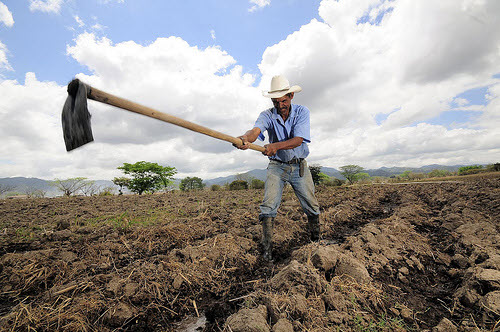The phrase “global food crisis” may strike us in the developed world as a bit overblown. Sure, we’re paying more at the grocery store, and that’s possibly affecting our discretionary spending… but we’re definitely not going hungry. And, OK, there are people in other parts of the world that don’t get enough to eat… but that’s not anything new, right?
Yes, it’s hard to imagine threats to our food supply when you can walk into a grocery store almost anywhere in the US and find an abundance of affordable meat, dairy, and produce. But in his new book Full Planet, Empty Plates: The New Geopolitics of Food Scarcity (affiliate link), Lester R. Brown, founder of the Earth Policy Institute, aptly demonstrates that our current food security situation is anything but normal… and could even represent the “weak link” to maintaining the standard of living to which we’ve become accustomed.
The structure of the book itself gives some insight into the threat posed by food scarcity. I’ve read a number of Brown’s books over the years, and I’ve gotten used to a pattern in them: the first half or so scares the hell out of you; the second half shows that there’s hope. After reading for a while, I flipped ahead a bit to see where that hopeful part started… and discovered that there wasn’t one. The combination of threats to our food supply isn’t like anything we’ve ever faced before, so we’re treading into new territory.
Many of the elements of this combination aren’t new, and Full Planet, Empty Plates provides ample history of the threats agriculture has faced before. Previous civilizations have destroyed the fertility of their soil, for instance, and the US Dust Bowl occurred because of poor land and soil management practices. We understand those problems, and have recovered from them. But now we’re adding new threats: a population of over 7 billion people, falling water tables, climate change, and deforestation. These threats aren’t just environmental: as we’ve already seen in the Middle East, these challenges to food security threaten the very structure of society itself. And the means by which we’re trying to address these threats only deal with the symptoms of the problem: the global “land rush,” for instance, may provide some temporary respite from food supply worries in some countries, but ultimately contributes to the larger challenges.
 As with all of Brown’s books, Full Planet, Empty Plates is very well-documented: as pointed out in a post here several weeks ago, over 150 data sets accompany the book. Brown fully explains the extent of food challenges in various regions of the globe, and the potential impacts based on environmental and socioeconomic factors in these regions. Yes, the reading can get a little dry or even overwhelming at points, but despite his grounding in the data, Brown never forgets the human impact, and portrays it with honesty and compassion.
As with all of Brown’s books, Full Planet, Empty Plates is very well-documented: as pointed out in a post here several weeks ago, over 150 data sets accompany the book. Brown fully explains the extent of food challenges in various regions of the globe, and the potential impacts based on environmental and socioeconomic factors in these regions. Yes, the reading can get a little dry or even overwhelming at points, but despite his grounding in the data, Brown never forgets the human impact, and portrays it with honesty and compassion.
This is a frightening book. We’re dealing with challenges that are very new: the price spikes in 2007-08 are really the first to represent the combination of threats that Brown explores here. We’re seeing some of that currently after this Summer’s Midwestern drought. Despite the unique combination of threats, we do know how to deal with them: from family planning to low-carbon energy development to reforestation efforts, the solutions are available to us. I suppose that “if” keeps Brown from spelling out the hopefulness of this situation: we have the tools available to face this challenge, but, so far, we’ve proven unwilling to use them with the necessary urgency.
Have you read Full Planet, Empty Plates? If so, share your take on it…
Photo credit: CIAT International Center for Tropical Agriculture via photopin cc

